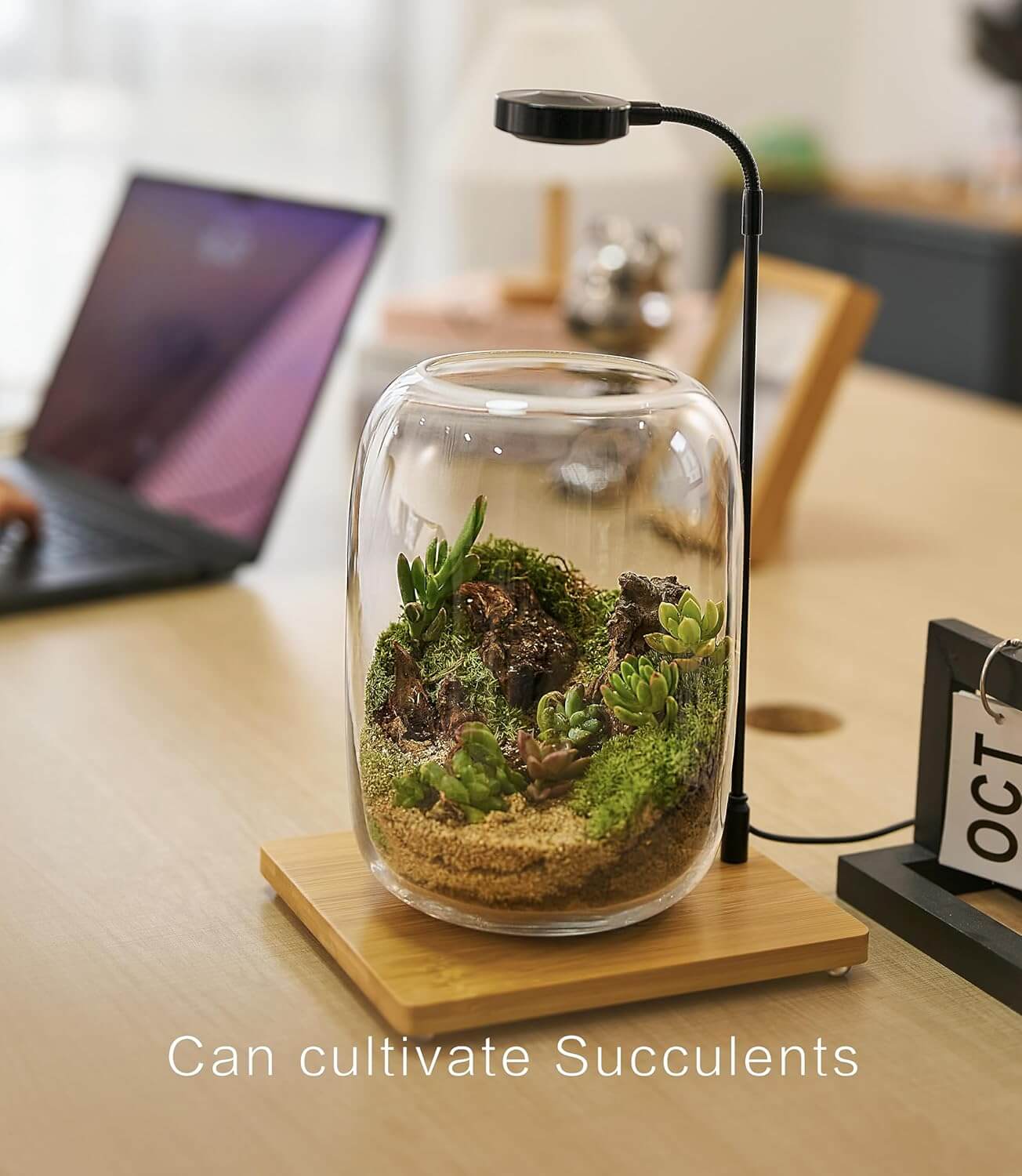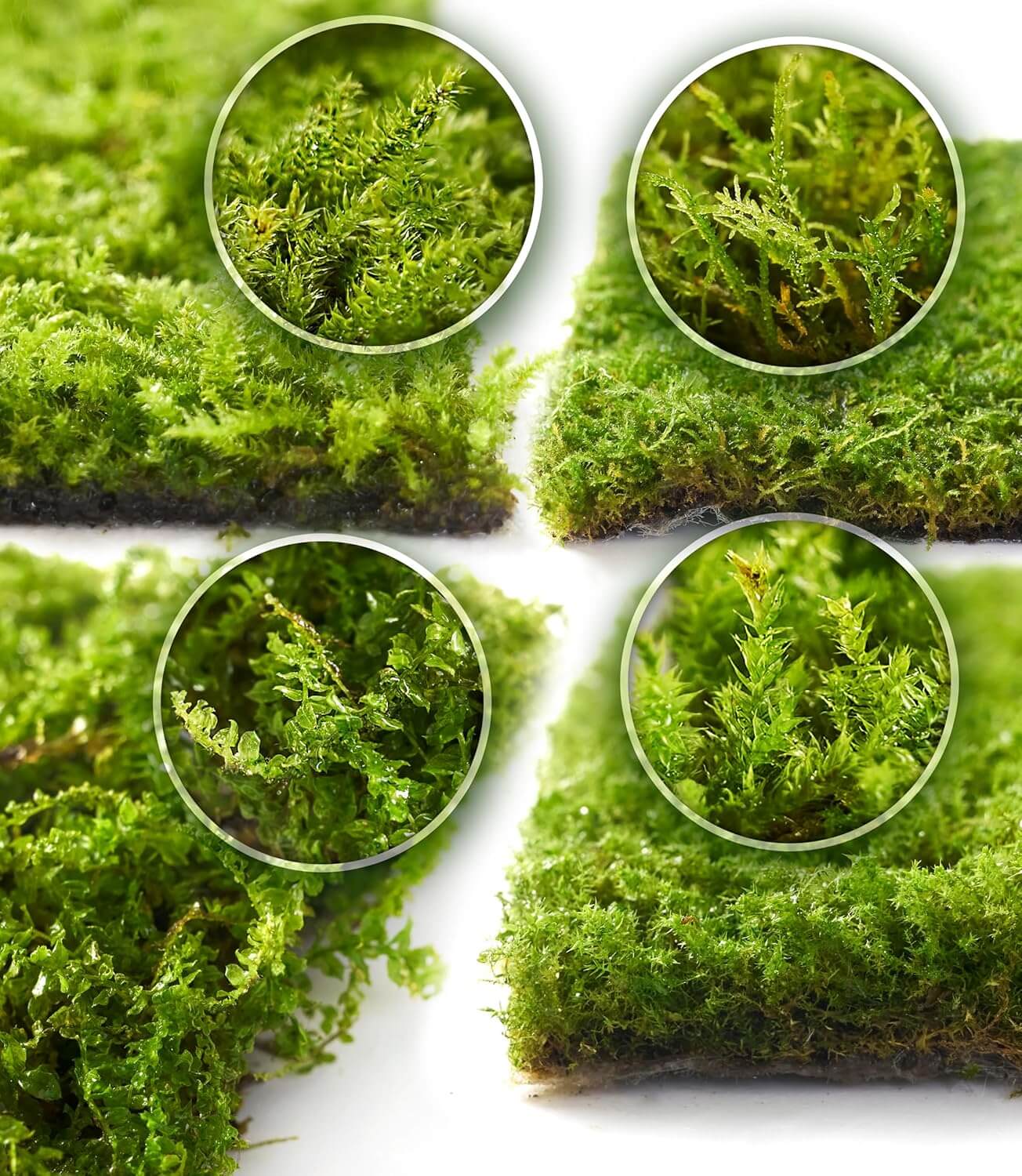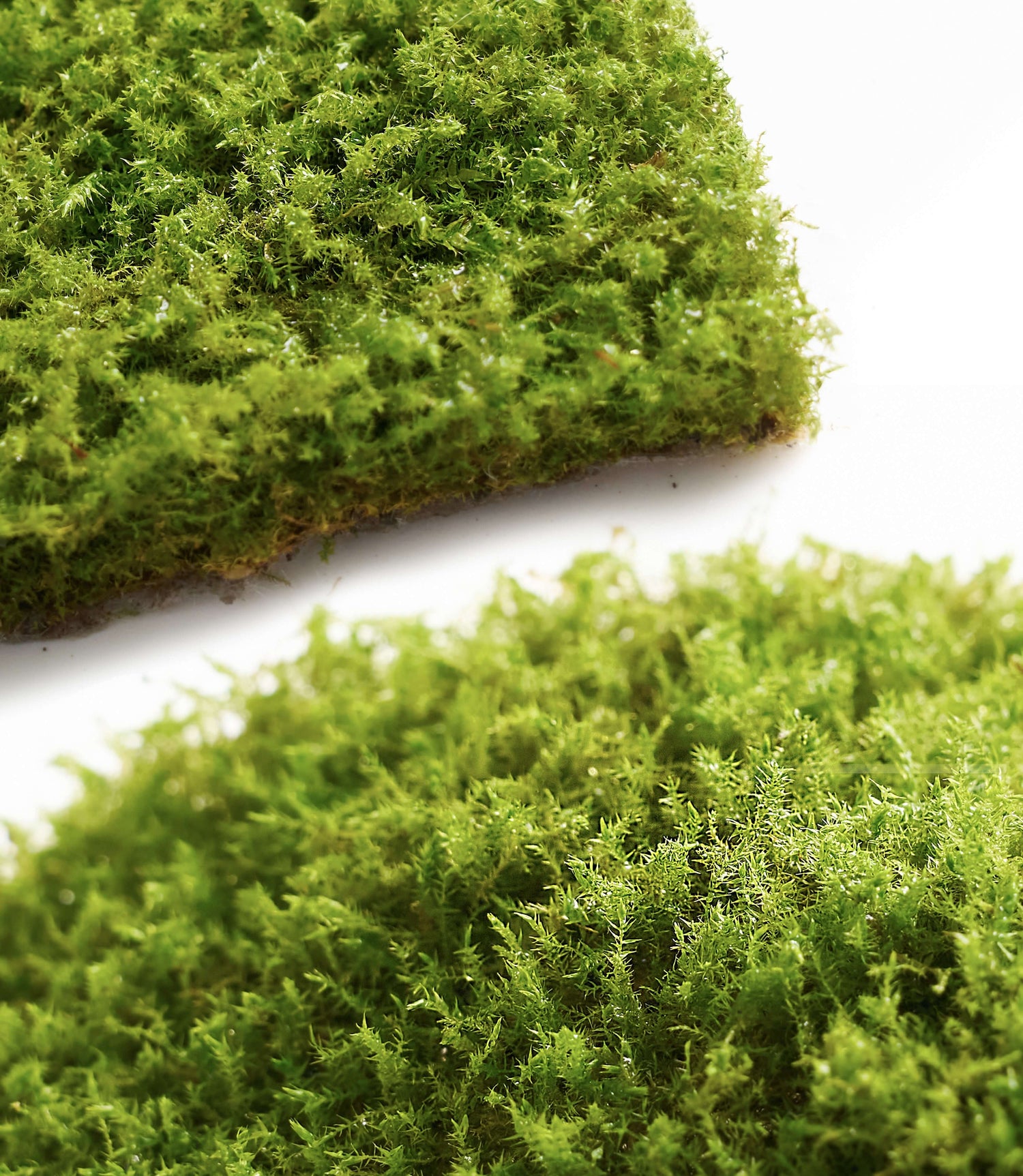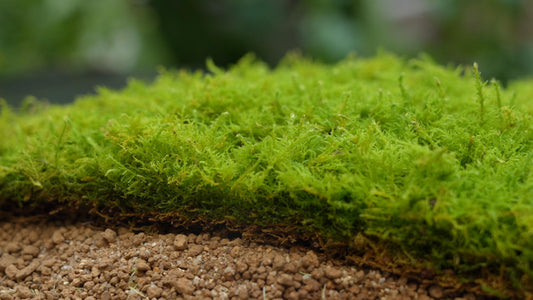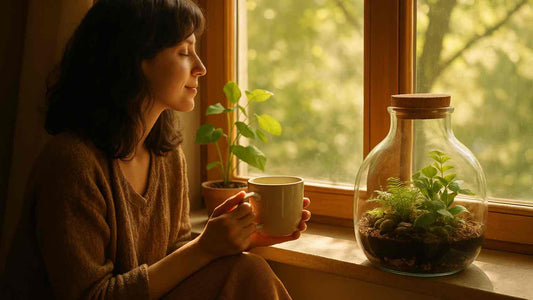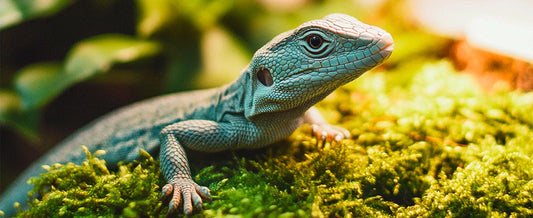How to Grow Orchids Using Live Moss: A Step-by-Step Guide
Struggling to keep humidity up without rotting roots? Try live moss for orchids. It isn’t just filler—it’s a living helper that stabilizes moisture and looks beautifully green. If moss ever “killed” your orchid roots, chances are the setup (thickness, airflow, watering) wasn’t quite right. This guide shows exactly how to choose, use, and care for live moss—step by step.
1) First, know the difference: live moss vs. dried sphagnum
Why live moss can be great
- It can keep growing and self-repair. Under the right light/humidity, live moss continues to carpet the surface; you won’t repot as often just to refresh broken, compacted fibers like dried sphagnum. [oai_citation:0‡AskGardening](https://askgardening.com/live-moss-for-orchids/?utm_source=chatgpt.com)
- Natural, vivid look. A fresh green top-dress frames blooms and turns a bark pot into a mini landscape.
- Smoother humidity. Used thin and airy, live moss buffers evaporation so roots stay “moist, not soggy.” Water by signals, not by calendar. [oai_citation:1‡The Spruce](https://www.thespruce.com/how-to-water-orchids-1902821?utm_source=chatgpt.com)
But watch for the gotchas
- Too wet + low airflow = trouble. Any moss layer that stays wet for long and lacks ventilation encourages mold and root issues—keep it thin, loose, and vent after misting. [oai_citation:2‡orchidboard.com](https://www.orchidboard.com/community/beginner-discussion/111187-mold-quick-drying-moss.html?utm_source=chatgpt.com)
- Potential hitchhikers. Untreated wild moss may introduce pests; quarantine and basic sanitation help. [oai_citation:3‡AskGardening](https://askgardening.com/live-moss-for-orchids/?utm_source=chatgpt.com)
- Environment picky. Insufficient light, very dry rooms, or poor water practices (standing water) can set moss and roots back. Adjust care to your space. [oai_citation:4‡The Spruce](https://www.thespruce.com/how-to-stop-overwatering-houseplants-11812171?utm_source=chatgpt.com)
Quick context: Many forum debates compare sphagnum moss vs. bark. Those trade-offs (moisture retention vs. aeration) still apply when you use a thin live-moss layer over a bark mix. [oai_citation:5‡Life Happens!](https://lifeandwork.blog/sphagnum-moss-or-bark-which-is-better-for-orchids/?utm_source=chatgpt.com)
2) How to choose live moss for orchids (4 checks)
- Species & tolerance: Prefer shade-tolerant types that handle mild wet/dry swings and hold structure.
- Feel & structure: Look for springy, layered, non-mushy tufts—fluffy structure = micro-air pockets for roots. [oai_citation:6‡ezgardentips.com](https://ezgardentips.com/sphagnum-moss-usage-for-orchids.html?utm_source=chatgpt.com)
- Cleanliness: Ask about pre-screening/sanitizing. If uncertain, rinse and briefly quarantine before use. [oai_citation:7‡AskGardening](https://askgardening.com/live-moss-for-orchids/?utm_source=chatgpt.com)
- Vigor: Fresh green color that perks up after misting is a good sign.
3) Four ways to use live moss with orchids
A. Thin top-dress (easiest, safest for beginners)
Pot in bark (optionally with a little coco/perlite), then add a 1–2 cm thin, fluffy live-moss layer on top. Keep it away from the crown/psuedobulbs by ~1 cm so air can circulate. This slows evaporation and reduces splash without smothering roots. [oai_citation:8‡Life Happens!](https://lifeandwork.blog/sphagnum-moss-or-bark-which-is-better-for-orchids/?utm_source=chatgpt.com)
B. Gentle root wrap for repotting
Soak, squeeze to damp (not dripping), and loosely wrap a ~1 cm layer around bare roots before you backfill with bark. Use breathable pots with drainage—never sealed glass—then ventilate after each mist. [oai_citation:9‡The Spruce](https://www.thespruce.com/how-to-water-orchids-1902821?utm_source=chatgpt.com)
C. Mix small amounts into media
In very dry rooms, blend a little shredded live moss into bark to buffer dryness (think 70% bark + 30% moss as an upper bound, then adjust). Keep pieces fluffy; don’t pack. [oai_citation:10‡Life Happens!](https://lifeandwork.blog/sphagnum-moss-or-bark-which-is-better-for-orchids/?utm_source=chatgpt.com)
D. Mounts & displays
For epiphytes on wood, a live-moss pad helps between daily mists. Pair with bright, indirect light and moderate humidity. [oai_citation:11‡orchidboard.com](https://www.orchidboard.com/community/printthread.php?t=20178&utm_source=chatgpt.com)
4) Step-by-step: repotting a Phalaenopsis with live moss
- Prep the moss: Rinse and soak ~20–30 min; squeeze to damp. [oai_citation:12‡ezgardentips.com](https://ezgardentips.com/sphagnum-moss-usage-for-orchids.html?utm_source=chatgpt.com)
- Trim roots: Remove dead/black mushy roots; healthy roots are silvery-green and firm. [oai_citation:13‡Better Homes & Gardens](https://www.bhg.com/gardening/how-to-garden/how-to-water-orchids/?utm_source=chatgpt.com)
- Pot setup: Use a breathable pot with drainage; add bark, then a light live-moss cushion.
- Set the plant: Spread roots, loosely fill gaps (don’t compress), and keep the crown above the rim.
- First watering: Water thoroughly, let excess drain, then place in bright, indirect light with airflow. [oai_citation:14‡The Spruce](https://www.thespruce.com/how-to-water-orchids-1902821?utm_source=chatgpt.com)
5) Six common mistakes (and quick fixes)
- Moss layer too thick. Keep top-dress ~1 cm; thick mats trap moisture and reduce gas exchange. [oai_citation:15‡orchidboard.com](https://www.orchidboard.com/community/beginner-discussion/111187-mold-quick-drying-moss.html?utm_source=chatgpt.com)
- Watering by calendar, not signals. Check feel/color: moss lightly dry and roots silvery → water; green/turgid → wait. [oai_citation:16‡Better Homes & Gardens](https://www.bhg.com/gardening/how-to-garden/how-to-water-orchids/?utm_source=chatgpt.com)
- Low airflow + all-moss setups. If your space is still, start with partial top-dress and add a fan/vent period after misting. [oai_citation:17‡orchidboard.com](https://www.orchidboard.com/community/beginner-discussion/111187-mold-quick-drying-moss.html?utm_source=chatgpt.com)
- No sanitation. Quarantine/sanitize new live moss briefly before it touches your collection. [oai_citation:18‡AskGardening](https://askgardening.com/live-moss-for-orchids/?utm_source=chatgpt.com)
- Using moss on genera that prefer drier roots. For drier-leaning orchids, keep moss sparse or stick to airy bark mixes. [oai_citation:19‡Life Happens!](https://lifeandwork.blog/sphagnum-moss-or-bark-which-is-better-for-orchids/?utm_source=chatgpt.com)
- Letting moss or media stay wet constantly. Allow brief drying and always drain standing water—especially in winter. [oai_citation:20‡The Spruce](https://www.thespruce.com/how-to-stop-overwatering-houseplants-11812171?utm_source=chatgpt.com)
6) Bottom line
Live moss isn’t a magic cure—it’s a smart helper when you respect its “rules”: thin, loose, well-vented, and watered by signals. Do that, and you’ll enjoy stable humidity, healthier roots, and a greener, calmer look all season long.
🌿 FAQ — Live Moss for Orchids
Will live moss introduce pests or pathogens?
Risk is low with clean handling. Quarantine new moss for 24–48 hours, use clean tools, and ensure airflow. Our live moss is lightly sanitized before packing.
Does moss stay wetter than bark and cause root rot?
Yes, moss retains more moisture than bark. Keep layers thin and fluffy, mist lightly, and ventilate after watering so droplets dry within hours.
How thick should a live-moss top-dress be?
About 1–2 cm, kept loose. Avoid covering the crown or pseudobulbs; leave ~1 cm gap for airflow.
Can I mix live moss into bark media?
Yes. In dry rooms, blend a small portion to buffer evaporation (e.g., bark-forward mix with a minority of moss). Keep pieces fluffy—do not pack.
Can I use live moss on orchid mounts?
Yes. A thin moss pad extends moisture between mists. Pair with bright, indirect light and moderate humidity; still mist periodically in dry homes.
How do I water orchids when moss is part of the setup?
Water by signals, not by calendar: lightly dry surface and silvery/gray roots → water; turgid green roots → wait. Always drain freely and avoid standing water.
How do I prevent mold on live moss?
Use a thin, airy layer; mist lightly; ventilate 10–15 minutes after watering. Increase airflow and reduce constant wetness if you see spots.
My moss dried out—can I rehydrate it?
Usually yes. Rehydrate gradually: fine-mist, cover loosely for 12–24 h, then vent. Repeat short mist-and-vent cycles until springy again.
What kind of water should I use?
Room-temperature water with good drainage is a safe baseline. Media choice matters: moss holds more than bark, so use lighter, less frequent watering.
Is live moss OK for orchids that prefer drier roots?
Use sparingly. Keep the moss layer thin, water conservatively, and favor bark-forward mixes for genera that dislike constant moisture.
Should I avoid thick moss “wraps” around roots?
Avoid tight wrapping. If you root-wrap during repotting, keep it ~1 cm thick and loose, then backfill with airy bark and ensure strong drainage.
How often should I refresh or replace the moss layer?
Inspect every few months. Refresh if it compacts, darkens, smells musty, or holds constant wetness. Shorten cycles in low-airflow or cool rooms.

